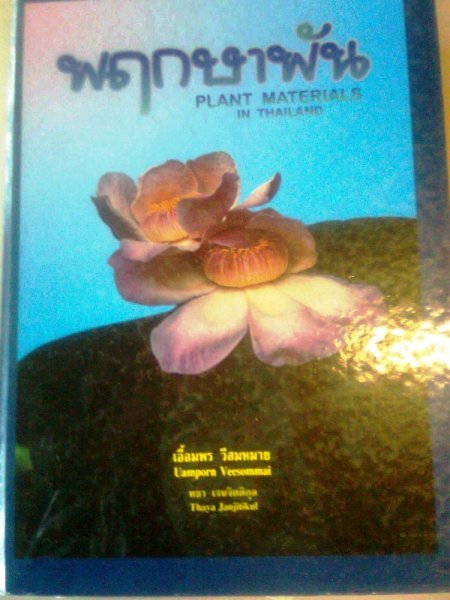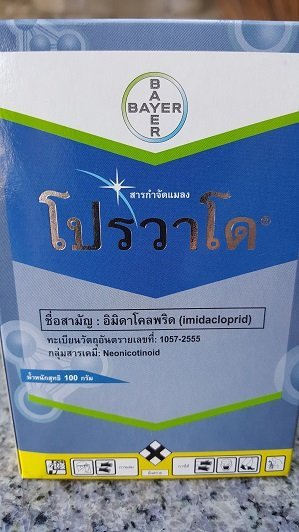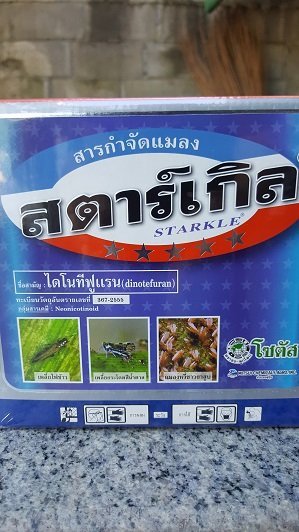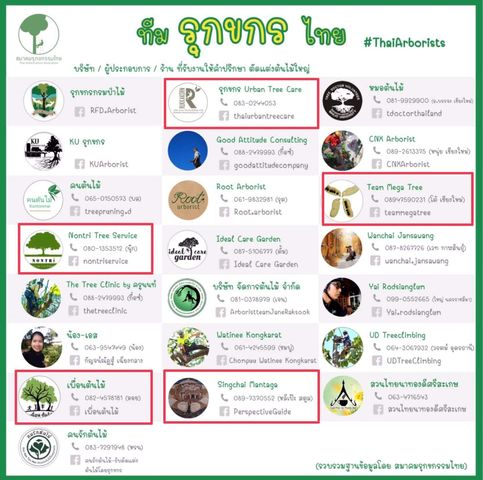
drtreelove
-
Posts
1,933 -
Joined
-
Last visited
Content Type
Events
Forums
Downloads
Quizzes
Gallery
Blogs
Posts posted by drtreelove
-
-
On 6/23/2025 at 4:27 AM, CLW said:
Sunburn?
Yes, sunscald is probably correct.
Maintain shading of the fruit as well as the soil surface to prevent loss of moisture in the soil and the plant tissue hydration. Dried tissues will burn more easily. Deep water adequately during the dry season, Mulch the soil surface for retention of soil moisture.
Nutrition matters! Biofertilization provides nutritional support for plant heath and resistance to environmental impacts.
-
On 6/7/2025 at 2:14 AM, sup3r1or said:
Hello everyone,
I am looking for some advice. We had a few trees in the garden for 5 years; we planted when we moved in. We had 5 cocoa trees; at some point they started to have this white stuff on them almost looks like mold or something. Even on actual fruits, someone told my wife that it was a fungal infection, and we had to them down, which was not great as they took time to grow. Now my wife said we have to cut down mango tree, we planted it when we moved in. Now I want to have an opinion on this before I cut it down. I took some photos to show how it looks like. If anyone can tell me is there a way to save the tree and treat it, we have zero experience of gardening unfortunately, but I am looking to learn.
I appreciate any advice.
The "white stuff" on the cocoa trees was probably mealy bugs or powdery mildew. Either/both are easy to control and certainly it was horrible advise to unnecessarily cut them down.
-
On 6/11/2025 at 4:21 AM, Antiparovian said:
Go to garden shop with photos and ask for advice.
Bad idea in my opinion. You may get a chemical treatment recommendation because that is what they are obligated to sell and that is the only thing they know. The shop will not likely know the importance of the cultural factors, growing condtions, soil and water management that are all-important for building plant health and natural resistance to pests and diseases.
-
 1
1
-
-
On 6/11/2025 at 12:07 AM, alanrchase said:
It appears you have an infestation of mango bark boring beetle larvae. Not a lot you can do about it as far as I know. I have occasionally had success cutting into the bark and killing the larvae, they feed just under the bark and chew holes into the trunk. Had a few trees die because of them. Some YouTube videos from India on how to try and deal with them. Normally the tree kills them off before they take a serious hold, beige coloured sap from a spot on the trunk is an indicator that the tree has stopped an attack.
From the one photo of the tree trunk, this looks like an accurate pest assessment.
There is not a lot you can do about advanced plant pest and disease conditions of any kind. Just like with human health, preventive wellness program is the key.
In our small hobby farm in Chiang Mai with one rai/55 mango trees, this stem borer was prevalent. It wasn't an aggressive tree killer, the beetle-borers don't form extensive galleries that cut off sap flow like some other bark beetles that I deal with. But I did implement a successful monthly routine with application of a preventive insectide barrier.
Pyrethroids are my chemistry of choice for bark beetle prevention (permethrin, bifenthrin, cypermethrin). I used Permethrin 10% which was available at that time from a local MaeJo ag shop. But the highly available household insecticide/termiticide Chaindrite Stedfast 30 SC with bifenthrin will have the longest residual activity. You may be able to get three or four months.
The pyrethroid solution is absorbed by the tree bark and provides a barrier for borer entry. It will also help to prevent termite activity/mud-tubes on the tree trunk.
For this specific application, I would double the normal rate of 30ml/liter, to 60. Mix in a small handheld sprayer and spray to wet the lower tree trunk until the point of run-off. Spray when there is a mimimun of 4 hours dry period from rain or sprinklers. This is not a foliar canopy spray, just the lower stem.
The other photos of the entire young tree show a relatively healthy foliar canopy. There is some lower foliage with fungal leaf spot, anthracnose, and/or insect pest holes. Prune that out and provide better nutrition with complete organic fertilizer, soil surface mulching or cover cropping, and good water management during the dry season. I hope you didn't remove the tree for these superficial factors. Sorry I only look at this forum once a month or so now.
-
I don't have direct experience growing Tamarind, but I know it is a fairly large growing tree, so give your seedlings plenty of space.
In my opinion, "see if they survive" is not a good attitude for growing any plants. Instead, be sure that they survive and thrive by learning as much as possible about the plant and the natural habitat and ideal growing conditions. Provide good soil fertility, soil surface protection (mulching, shading, cover cropping) and most important - good water management. See if they survive severe drought stress, or over-watering.
-
I don't know Pattaya but HomePro, Global House, ThaiWatsadu and other home improvement superstores usually have it in the garden section. The plant shops outside in parking lot areas of some HomePros often have it too, as well as ag specialty shops in farming areas.
My two satang as an organic program advocate, is to avoid repeated use of high NPK, high salt index chemical fertilizers. They may jack green growth that looks good, but do not supply complete plant nutrition and do not contribute to long term soil and plant health. High salt index chemical fertilizers like 15-15-15 dessicate roots, kill the all-important beneficial soil organisms, and create internal plant biochemistry that attracts pests and disease. If you go that route and find your NPK fertilizer, pick up some insecticide and fungicide too, you will need it.
Or go instead with complete organic fertilizer like that from Organic Totto, Best Garden State, or Maruchu Bussan.
-
 1
1
-
-
13 minutes ago, gargamon said:
PM me please the Dr you used. I'm heading to the US tomorrow to look at getting a hip replaced. Hopefully my Medicare will cover a portion.
Dr James Huddleston at Stanford Joint replacement center, Redwood City CA and Stanford Hospital, Palo Alto. He's done thousands.
And the Stanford team and new hospital are awesome. Mine was five years ago and I couldn't be more pleased and grateful for a "new lease on life". I've been pain-free, in my 70s I do outdoor physical work, hike and mt bike. There are many good docs for this in Calif and the US and its a very much in-demand surgery, with considerable waiting times for appointments at the most popular clincs.
Medicare plus an AARP United Health Care 'supplement' covered 100% of my bilateral titanium hip replacements. That's why I went back to Cali for this. But unless you have existing Medicare coverage in place, you will have to go through the "open enrollment' process during Jan - March. And then the supplement policy enrollment. Once your medicare coverage is secured, you will need a "primary care physician" to refer you to a specialist. Then the orthopedist appointment, mine was a three month wait just for first exam at Stanford, then the surgery appointment was another 3 month wait. Second hip was done 6 months later. So over a year to get it all done. With DOGE cutting SSA staffing I don't know how Medicare enrollment is being affected.
Recovery was remarkably smooth, especially compared to my previous knee replacements. The prescribed physical therapy I found lame and boring, so I ditched the appointments and did my own. Being as healthy as possible and not over-weight will make it all much easier.
-
 1
1
-
-
Insecticides are only a short term fix. Repeated use will be detrimental to the beneficial soil biology and important metabolic functions.
Focus on good growing conditions, soil fertility and water managment which promotes plant health and reduction of pests and disease.
Healthy plants don't get pests.
-
On 3/26/2025 at 9:14 AM, still kicking said:
Are all Thais like that? I just wonder.
Not quite! This lucky cat has it made.

-
 1
1
-
-
On 3/3/2025 at 10:49 PM, brutox said:
I plan to enliven my living room view out onto my balcony with a flowering garden. From some of you smart, experienced gardeners out there, I'd like to hear your flower plant suggestions, which are:
- long-blossoming and dense with flowers;
- preferably perennials, but will do annuals if they are riotously colorful;
- potted - mix of heights .. 30-40 cm (12-15 inches) in the foreground .. 90-110 cm (36-45 inches) in the background;
- hanging plants suspended on a wall - foliage draping down of any length;
- strong colorfully-leaved (with/without flowers) like 'Purple Heart';
- not too delicate and require no babying;
- easily pruned to increased their density;
- strongly fragrant is a major plus;
- maybe include one tall-ish, wispy-ish, tree-ish decorative plant at the very back of the balcony (I love Japanese Maples, but have seen none here); and,
- purchased potted, or as seedlings - not grown from seeds.
My balcony is 100% shaded for about 8 months annually and 50% direct afternoon sunlight for about 4 months annually.
I will install a drip irrigation system on a timer and I have a pretty good sense for soil mixing and fertilization.
The general planting plan is a single row of low-height plants (12-15 inches), backed by a single row of taller plants (36-45 inches).
Any ideas out there?
Thanks!
That's an awesome dream! But -
"100% shaded for about 8 months annually"
This amount of shade is a very limiting factor for your dream garden. But there may be some hope:
https://www.gardeningknowhow.com/special/shade/tropical-shade-gardening.htm
-
pgrahmm has good intentions and good experience with ProAuto and is a Toyota mechanic himself. But I had a disappointing experience there a few years ago. ProAuto is primarily a tire shop. They wanted a lot of time and a lot of money to diagnose a problem that turned out to be a 5 min wiring fix at a Toyota dealer.
I recommend Saha Panich, the Toyota dealer on Chotana Rd (Hwy 107) . The service manager named Sarot speaks English and thoroughly knows Toyota's.
-
 1
1
-
-
Not a fungus infection. It appears to be a mealy bug infestation (a very common sucking insect pest).
If so, you can reduce the population numbers significantly by washing them off with a strong water spray. And/or wipe them off with a rag or cotton gloved hand.
If not on food plants, you can use a systemic insecticide soil drench. The insecticide will be taken up through the roots and translocated throughout the foliage, so that the sucking insects ingest the chemistry and die. Insecticide contact sprays have limited effectiveness because mealy bugs have a waxy protective coating that prevents chemical contact.
The most effective systemic insecticide will be a neonicotinoid class of pesticide, like dinotefuran active ingredient (Starkle in Thailand) for extremely fast uptake and kill, but limited residual effectiveness. Or imidicloprid active ingredient for slow uptake but one year or more residual effectiveness. Consider using both.
Improving soil fertiity and plant nutrition will help the plants build natural resistance to pests and disease. Use of high NPK, high salt index chemical fertilizers are a pest magnet.
I hope that helps, Don
-
 1
1
-
-
https://sriphat.med.cmu.ac.th/en/service/detail/14
Good. But if your condition is not advanced, consider non-surgical alternatives, diet, drops, etc
-
On 2/20/2025 at 5:33 AM, Samh said:
I noticed when moving from Ranong to Phang gna that whilst the rubber trees in Ranong had no or very few leaves in Phang gna they were all green. Then moving on to Surat Thani they were devoid of leaves in Surat thani.
There may be regional differences in conditions, climate factors, soil moisture, nutrients, and genetics.
-
On 2/20/2025 at 9:33 PM, Formaleins said:
Wonder if anyone knows what the score is here with Stihl round files for sharpening a chainsaw chain? I am running a semi-chisel 3/8 pitch chain, this according to Stihl requires a 3/64" / 5.2mm round file. However, when ordering a spare 3/64" file from Stihl, it comes marked as 3/64" / 5.0mm. (0.2mm undersize - with the next size up bein 7/32" / .404 / 5.5mm)
I also use the Stihl 2 in 1 sharpener and when I opened it up it has round files marked up as 13/64" and 5.2mm - the correct size!
When I measure the files with a micrometer, they are both 5.0mm!
This sizing of the files is apparently critical to getting the correct angle and cut to make the cutters sharpened correctly, so which is it to be then? Is 13/64" / 5.0 mm correct or is 13/64" / 5.2 mm correct?
I am confused, but trying to get a response from Stihl is a waste of time, anyone running a 3/8" Chain from Stihl, if so what size round file are you using?
Thanks!
Not critical IMO. Don't over-intellectualize it. Use the 13/64 that you get, and ditch the micrometer. +/- 0.2 mm is not going to make much difference. I've used 7/32 files on 3/8 pitch chain for going on 5 decades and done a whole lot of safe and efficient tree work that way. Concentrate instead on smooth and consistent filing strokes and angle. Insure good grip and control of the saw, good footing and solid stance. Keep your chain out of the dirt, and off of your leg and face. Save the beers and weed until after the job is done and the chainsaw is is in the shed.
-
 1
1
-
 1
1
-
-
Yes the South American origin rubber tree, Havea brasiliensis, is tropical deciduous, naturally sheding leaves for a short period of time in winter. (I believe it's more of a drought-dormancy than a cold-dormancy, like teak.)
- Not to be confused with another species called rubber tree, or rubber plant, Ficus elastica, the popular large leaf house plant, which is evergreen.
-
I just saw this. Any luck with diagnosis or treatment?
It's unusual. Not sure what it is, but possibly abiotic (not a living organism, pest or disease). Upper leaf surface only and primarily on the lower foliage indicates a possible splash substance. No folage discoloration or die-back? It may be a cosmetic nuisance only. Only one plant? Try washing or wiping the leaf surfaces to remove the substance, with a water spray, wet rag or cotton gloves.
-
8 hours ago, Will B Good said:
Interesting.....also found this.....could be....... as we were inundated last year.....
Alternate Bearing
Mango trees are known for alternate bearing, which means they produce fruit in cycles. If your tree had an exceptionally large crop last year, it may have depleted its energy reserves, leading to little or no fruit this year. Trees sometimes take a rest year to recover.
- unless intelligently cultivated with adequate nutritional support, soil health building, and proper water management.
-
 1
1
-
 1
1
-
-
On 11/18/2024 at 8:56 PM, watgate said:
I walk around my house at night with a flashlight and a fly swatter and a long pole and I play a game with them. Sometimes I win and can make them fall to the ground where I can crush them, and other times the buggers scammer off with their neat disappearance techniques and I lose. I have finally eradicated many but still hunt for the remaining miscreants at night. I just got tired of them <deleted>ting all over the inside of the house. It has become kinda fun and I can can go to battle with them each night.
Get a cat. Ours make sport of stalking and snatching them off the walls, with fascinating aerial acrobatics.
-
"I see my wife and her mother doing things while we are at my wife's plot of land and think, "That doesn't look right to me."
I voice an opinion and am shot down ... "
Good luck with that aspect of getting involved. How's your tolerance and communications for these differences of opinion and practices that "don't look right" to you. Because from my own experience and that of farming friends, that's not going to go away. If the frustration is going to stress you and your marriage, then stay out of it and let the wife and MIL do it their way.
Some horticultural practices depend largely on whether you are growing for commericial sales, or hobby farming for personal use and ornamental value. For example, I'm not a commercial grower. I grow bananas for the awesome green beauty, fast growth and fruiting, and visual screening function, as well as for family consumption of the fruit. So I manicure the plants with weekly monitoring and trimming of dead and dying leaves, and I thin for spacing and directional pruning. All that may not be practical, cost effective or necessary for commercial production.
The flowers can be used, cooked and eaten, but we don't often do that. We usually cut them off and give them away to neighbors or chop and compost.
After harvesting the bananas, I 'chop and drop' the spent plant and leave-lay for mulch. The cut plant will regrow from the center, but I prefer to continue to cut it until it gives up, and I cultivate one or more of the offshoots. I don't have dairy or chicken manure available on site, so I buy and blend composted manures and other ingredients for my own COF (complete organic fertilizer.
Durian have special requirements, especially for soil and water management, and prevention of root and crown rot soil-bor)ne pathogen infections. See TM Durian Farmer channel on YouTube for some tips.
Papaya, mango and other fruit - its best to buy known varieties as seedlings or grafted young plants. When you propagate from seeds you are taking a chance at disappointment in the resulting growth and fruiting.
-
On 11/27/2024 at 8:41 PM, Yellowtail said:
Can anyone recommend a good tree service and or landscaper in the Taling Chan/Pinklao area?
What kind of work are you needing?
For a tree service, I don't have personal experience with anyone there in recent years, but I'm attaching an old list I have from the Thai Arboricultural Association, (TAA on Facebook). Forum member CLW had tree pruning done at his home in Bangkok by a woman-arborist owned TAA member tree service but I don't remember the name. Maybe he will see this and post the name and contact.
For landscape design and installation contact Ben at Thai Garden Design. https://www.thaigardendesign.com/
For larger tree and landscape projects, Nong Nooch Botanical Garden in Pattaya has a services division.
-
Contact forum member Grafting Ken by PM. (He may not be permitted to post commercial plant sales information).
Otherwise, It is possible to find grafted lemon varieties at plant markets, but look for actively fruiting plants for sale where you can identify the actual fruit you want. Lime and lemon foliage and growth habit can look similar when there is no fruit present.
Kickstart is right about providing afternoon shading, but from my experience that applies mostly for newly planted and young trees. Once a root system is established, preferably in fertilie soil and with adequate deep watering and mulching of the soil surface, maturing trees can take full sun. Allow a full foliar canopy to grow and shade the soil surface to avoid drying and cooking the all-important beneficial soil biology. I have grown lemons in full sun in Chiang Mai and India and in the Arizona desert.
-
I'm not sure what that worm is, but there is low tox general treatment available for wood boring beetles and moth larvae.
Apply a pyrethroid insecticide drench (permethrin, cypermenthrin, or preferably bifenthrin active ingredient as in Chaindrite Stefast 30SC. Dilute 30 ml of the concentrated product wih 1 liter of water, spray on the wounded stems where borers and their 'frass' are present. Spray only the woody stems, avoid excessive over-spray and soil contamination. Pyrethoids are low toxicity for mammals, people and pets, deadly for insects and fish, avoid ponds and creeks. But wear long sleeves and pants and mask to avoid skin and respiratory exposure ). Bifenthrin has longest residual effectiveness, 6 months or more, while organic insect repellents would have to be repeated every week or two. Pyrethoids are not systemic and won't enter the conductive tissues of the tree, the flowers or fruit.
But I believe that the borer is not the causal factor of the wounding, it is a secondary opportunist invading the exposed heartwood of the previously wounded stems. The borer activity will likely not advance the wounding of living tissue, but could hasten the decomp of the heartwood and structurally weaken the stem.
In general for preventive management, avoid wounding of woody stems, build healthy soil which promotes general tree health, natural resistance to pests and diseases, and facilitates the formation of callus tissue and wound closure .
I hope that helps, Don
-
 1
1
-
-
Dr Wittawat Rawiyotai
https://www.bangkokhospital-chiangmai.com/en/doctor/dr-wittawat-rawiyotai-m-d/
-
 1
1
-






Problem with banana growth.
in Farming in Thailand Forum
Posted
Pretty good ai response, Although from experience, depending on the depth of the sunscald, the underlying fruit can be affected with rapid browning.